Sihan Ren
SCOPE: Sign Language Contextual Processing with Embedding from LLMs
Sep 02, 2024
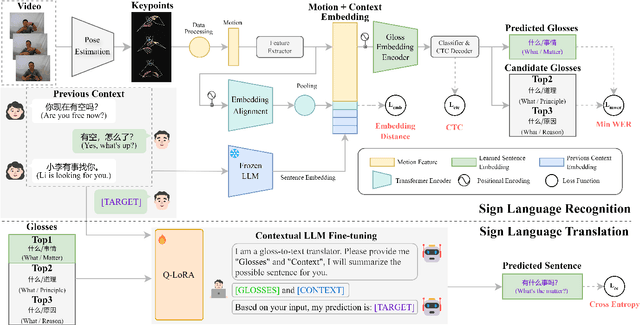

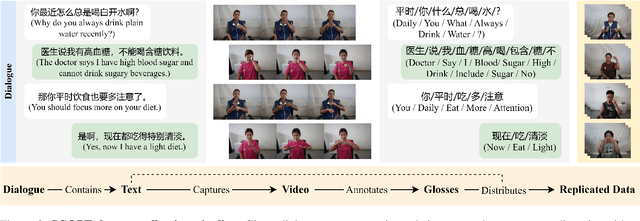
Abstract:Sign languages, used by around 70 million Deaf individuals globally, are visual languages that convey visual and contextual information. Current methods in vision-based sign language recognition (SLR) and translation (SLT) struggle with dialogue scenes due to limited dataset diversity and the neglect of contextually relevant information. To address these challenges, we introduce SCOPE (Sign language Contextual Processing with Embedding from LLMs), a novel context-aware vision-based SLR and SLT framework. For SLR, we utilize dialogue contexts through a multi-modal encoder to enhance gloss-level recognition. For subsequent SLT, we further fine-tune a Large Language Model (LLM) by incorporating prior conversational context. We also contribute a new sign language dataset that contains 72 hours of Chinese sign language videos in contextual dialogues across various scenarios. Experimental results demonstrate that our SCOPE framework achieves state-of-the-art performance on multiple datasets, including Phoenix-2014T, CSL-Daily, and our SCOPE dataset. Moreover, surveys conducted with participants from the Deaf community further validate the robustness and effectiveness of our approach in real-world applications. Both our dataset and code will be open-sourced to facilitate further research.
OMG: Towards Open-vocabulary Motion Generation via Mixture of Controllers
Dec 18, 2023
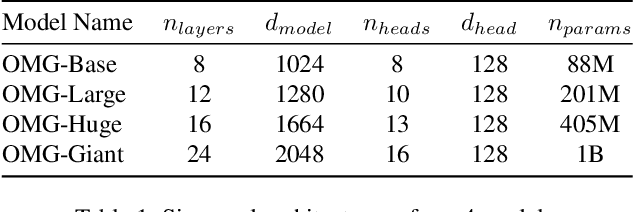
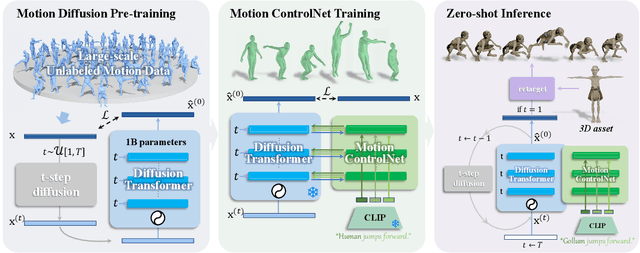
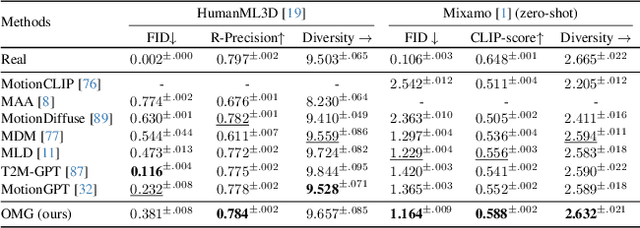
Abstract:We have recently seen tremendous progress in realistic text-to-motion generation. Yet, the existing methods often fail or produce implausible motions with unseen text inputs, which limits the applications. In this paper, we present OMG, a novel framework, which enables compelling motion generation from zero-shot open-vocabulary text prompts. Our key idea is to carefully tailor the pretrain-then-finetune paradigm into the text-to-motion generation. At the pre-training stage, our model improves the generation ability by learning the rich out-of-domain inherent motion traits. To this end, we scale up a large unconditional diffusion model up to 1B parameters, so as to utilize the massive unlabeled motion data up to over 20M motion instances. At the subsequent fine-tuning stage, we introduce motion ControlNet, which incorporates text prompts as conditioning information, through a trainable copy of the pre-trained model and the proposed novel Mixture-of-Controllers (MoC) block. MoC block adaptively recognizes various ranges of the sub-motions with a cross-attention mechanism and processes them separately with the text-token-specific experts. Such a design effectively aligns the CLIP token embeddings of text prompts to various ranges of compact and expressive motion features. Extensive experiments demonstrate that our OMG achieves significant improvements over the state-of-the-art methods on zero-shot text-to-motion generation. Project page: https://tr3e.github.io/omg-page.
 Add to Chrome
Add to Chrome Add to Firefox
Add to Firefox Add to Edge
Add to Edge